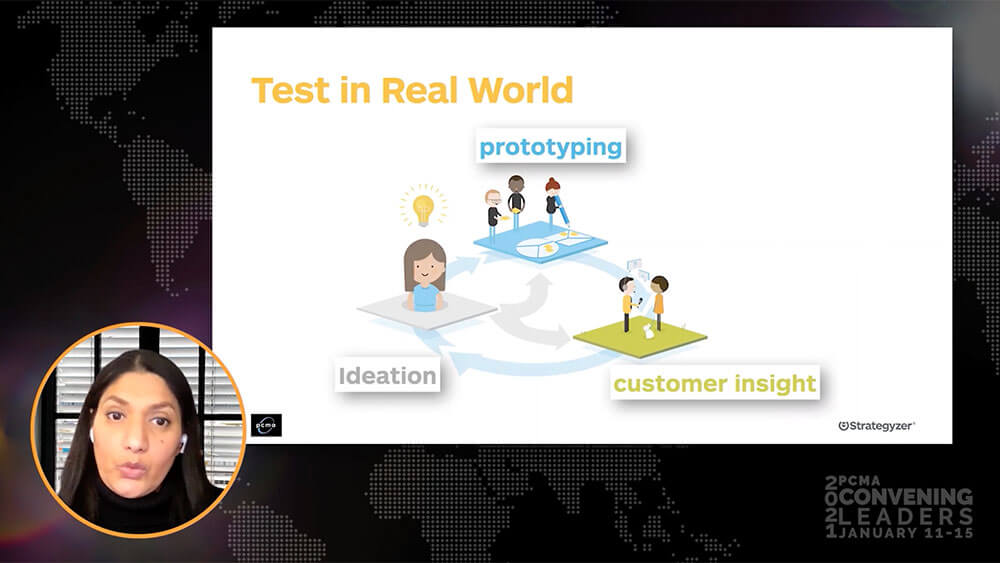
Shamira Miller, an executive advisor for Strategyzer and an innovation and growth coach, presents during Convening Leaders 2021.
Periods of rapid change, like the one we’re in the thick of now, often see the birth of new, transformative business models. The business event industry has been no exception.
But how do you start from square one? Last week, during the 2021 Convening Leaders session “Re-design Your Business Model to Prevail in Changing Times,” Shamira Miller, an executive advisor for Strategyzer and an innovation and growth coach, laid out the framework for taking those first few wobbly steps, and why it’s more important than ever to start thinking right now about what’s next.
It starts with a process of charting the nine building blocks that make up a business’ current infrastructure. Mapping out these blocks offers a bird’s eye view of a business, Miller says, and can be instrumental in spotting potential for innovation.
Miller suggests that companies and organizations typically innovate in three ways. Here’s how Amazon, for example, has used all three to great success.
- Efficiency innovation — Replacing workers with robots in warehouses.
- Sustaining innovation — Introducing the Kindle as another channel to sell books.
- Transformative innovation — Changing its internal mechanics with the launch of Amazon web services.
It’s key to remember that business models expire whether we like it or not. “And nowadays they expire a lot faster than we’re used to,” Miller said, citing Kodak. The company invented the first digital camera but chose not to capitalize on the technology. In 2012, Kodak declared bankruptcy.
“They were afraid they were going to cannibalize their existing business,” Miller said. Kodak fell into the first category of sustaining innovation, or making the most of their existing model, instead of wading into the more uncertain waters that come with transformative innovation. Its misstep — pushing aside the other streams for potential innovation.
Now take another example in the same consumer product category — Fujifilm. The company also struggled when the digital camera age kicked off in the early 2000s, but unlike many of its competitors, it chose to diversify, using its technologies and assets to build new revenue streams in areas like cosmetics and pharmaceuticals — a prime example of transformative innovation. In fact, it’s currently helping produce COVID-19 treatments and vaccines, and the company’s total revenues currently hover just over $21 billion.
“You have to think proactively … rather than let things happen to you,” said Miller, who runs workshops with companies to help them build their own innovation portfolios.
This exercise will look different for every company, and Miller stresses that it’s not just meant for behemoths like Fujifilm, who have built innovation hubs specifically for this purpose. Smaller companies and organizations can build a portfolio of one or two good ideas, enough so that “you’re not putting all of your eggs into one basket,” Miller said.
To start the process, take the below steps with team members:
- Create a safe space for exploring ideas. Team members should be able to share their ideas without fear of criticism.
- Display curiosity. Help them expand on their ideas by asking questions.
- Explore alternatives. Guide them in finding more (and possibly) better ideas to avoid getting stuck on just one.
For more on how to lead a team further into the innovation process and how to recognize superior business models, Convening Leaders registrants can watch the session on-demand in the CL library. Interested in registering for Convening Leaders’ on-demand sessions? Visit conveningleaders.org.
Jennifer N. Dienst is managing editor of Convene.
